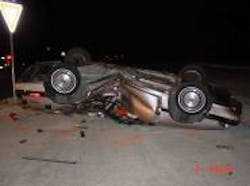“We know that cell phone use is a very risky distraction and texting is even higher risk. We now know that cell phone use causes many more crashes than texting. The main reason is that millions more drivers use cell phones than text. That is why we need to address both texting and cell phone use on our roads.” –Janet Froetscher, president & CEO of the National Safety Council
So, the National Safety Council (NSC) estimates at least 28% of all traffic crashes – some 1.6 million per year – are caused by drivers using cell phones and texting. The NSC further estimates that 1.4 million crashes each year are caused by drivers using cell phones, with a further 200,000 additional crashes annually caused by drivers who are texting.
In constructing these estimates, NSC said it used widely-accepted statistical methods and analysis based on data of driver cell phone use from the National Highway Traffic Safety Administration (NHTSA) and from peer-reviewed research that quantifies the risk of using a cell phone and texting while driving. The group added that its statistical model and estimates were peer-reviewed by academic researchers in traffic safety and biostatistics.
The estimate of 25% of all crashes – or 1.4 million crashes – caused by cell phone use was derived from NHTSA data showing 11% of drivers at any one time are using cell phones and from peer-reviewed research reporting cell phone use increases crash risk by four times. The minimum 3% of crashes – or 200,000 crashes – caused by texting comes from NHTSA data showing 1% of drivers at any one time are manipulating their device in ways that include texting and from research reporting texting increases crash risk by eight times.
Using the highest risk for texting reported by research of 23 times results in a maximum of 1 million crashes due to texting; still less than the 1.4 million crashes caused by other cell phone use, NSC said. How many highway fatalities and injuries those crashes result in isn’t addressed in the group’s research, but one can insinuate that the numbers are not small.
Now, a lot of truckers are probably rolling their eyes at all of this – lord knows, I’ve done it myself in this very space. But this issue of distracted driving is extremely important to the trucking community – not so much for the distraction cell phone/texting use among its own community of drivers, but how such distractions among the larger population of everyday motorists impacts truckers.
About four years ago, Craig Harper, then an executive vp for Lowell, AR-based truckload carrier J.B. Hunt, stated that truck-car accident research done by the AAA Foundation and the Federal Motor Carrier Safety Administration (FMCSA) revealed that blame for the truck-car crash fatality rate is largely the fault of motorists, not truck drivers.
“The AAA study found that in 73% of the truck-car crashes studied, no unsafe act on the part of the truck driver caused the accident,” he said at the time.
Other crash research Harper pointed to showed that car drivers are four times more likely to rear end a truck than truckers are to rear end cars; are 10 times more likely to crash into a truck head on than vice versa; are three times more likely to speed in poor road conditions (such as rain) than truck drivers; and are eight times more likely to be involved in crashes involving drowsiness than truckers.
Now, add distracted driving to that dangerous mix and you can see how such behaviors behind the wheel can make a bad situation worse on our roadways.
